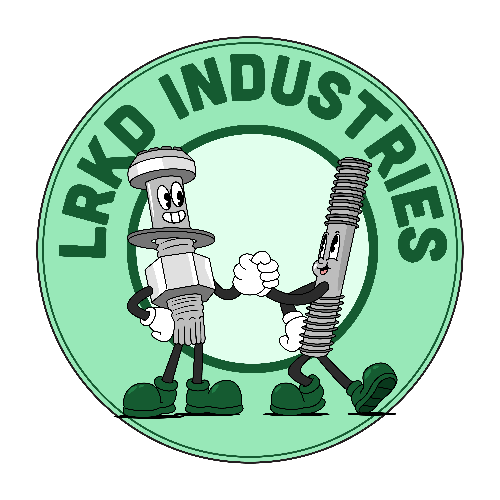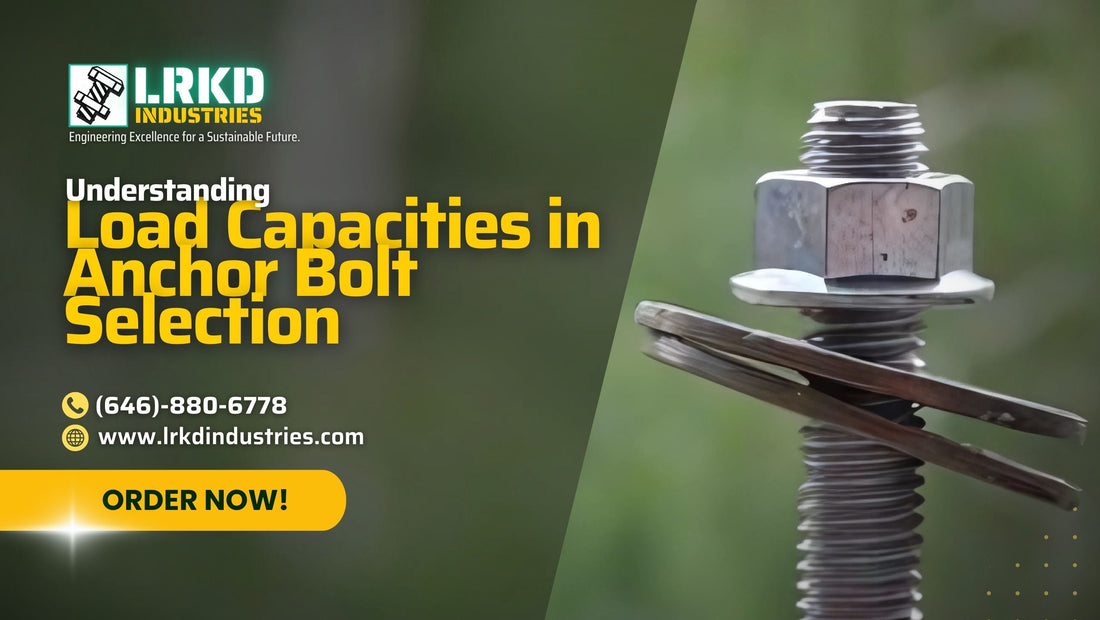Consider the situation in which you are securing a heavy industrial machine to a concrete floor, and then the bolts break under pressure. The consequences could be disastrous, including property damage, safety hazards, and costly downtime. Anchor bolt selection involves more than just selecting a size; it requires an understanding of load capacities and an assurance of structural integrity.
With the help of this guide, you will be able to navigate anchor bolt selection, focusing on load capacities, material strengths, and best practices for installation. It is important to have this knowledge, regardless of whether you are a construction engineer, a project manager, or a DIY enthusiast.
What Are Anchor Bolts?
Anchor bolts are essential fasteners used to secure structures, machinery, and equipment to concrete surfaces. They come in various types, sizes, and materials, each with different load-bearing capacities.
Common Types of Anchor Bolts
Cast-in-Place Anchor Bolts – Embedded into concrete before it sets, providing excellent load-bearing capacity.
Expansion Anchors – Expand against the base material when tightened, used for post-installed applications.
Epoxy Anchors – Bonded with adhesive resins, offering high resistance to pullout forces.
Sleeve Anchors – Suitable for medium-duty applications, commonly used in masonry.
Wedge Anchors – Dependable for heavy-duty loads in hardened concrete.
Each type has unique characteristics, but the key factor in choosing one is load capacity.
The Importance of Load Capacities
Selecting the wrong anchor bolt without considering load capacity can lead to structural failures. Load capacity refers to the maximum force a bolt can withstand before failure. It is influenced by:
Bolt material (carbon steel, stainless steel, high-strength alloys)
Bolt diameter and length
Concrete strength
Embedment depth
Type of load applied (tension, shear, or combined loads)
Tension vs. Shear Load Capacities
Anchor bolts experience two primary forces:
Tensile Load: The force that pulls the bolt away from the surface (common in suspended structures and wall-mounted applications).
Shear Load: The lateral force applied perpendicular to the bolt (seen in railings, signposts, and machinery support).
Understanding these forces helps in selecting a bolt that can withstand both types of loads effectively.
Load Capacity Chart for Common Anchor Bolts
Below is a reference table showcasing typical load capacities based on bolt size and type.
|
Anchor Bolt Type |
Diameter (inches) |
Tension Capacity (lbs) |
Shear Capacity (lbs) |
|
Wedge Anchor |
1/2" |
2,500 |
3,200 |
|
Wedge Anchor |
3/4" |
4,800 |
5,600 |
|
Sleeve Anchor |
1/2" |
1,800 |
2,200 |
|
Epoxy Anchor |
1/2" |
3,000 |
3,500 |
|
Epoxy Anchor |
3/4" |
5,000 |
6,200 |
Note: Load capacities depend on factors like embedment depth and concrete strength (typically 4,000 psi concrete assumed here).
Factors That Affect Load Capacities
1. Concrete Strength
The compressive strength of concrete greatly affects how much load an anchor bolt can handle. Higher-strength concrete allows for higher load capacities.
2. Embedment Depth
Deeper embedment improves anchor bolt performance by increasing resistance to pullout forces. However, excessive embedment may cause installation difficulties or concrete cracking.
|
Embedment Depth (inches) |
Load Increase (%) |
|
2" |
Base Load |
|
3" |
+25% |
|
4" |
+50% |
|
5" |
+75% |
3. Spacing Between Bolts
If bolts are placed too close together, their load capacities decrease due to overlapping stress zones in the concrete.
|
Bolt Spacing |
Load Capacity Reduction (%) |
|
3x Bolt Diameter |
No Reduction |
|
2x Bolt Diameter |
-20% |
|
1x Bolt Diameter |
-40% |
4. Edge Distance
Installing bolts too close to an edge reduces their effectiveness and can lead to concrete splitting.
How to Properly Select and Install Anchor Bolts
Step 1: Determine Load Requirements
Calculate the expected loads (tensile, shear, or both).
Factor in safety margins (typically 4:1 for critical applications).
Step 2: Choose the Right Anchor Type
Use wedge anchors for heavy-duty applications.
Opt for epoxy anchors in seismic zones or high-vibration environments.
Select sleeve anchors for lighter applications like handrails.
Step 3: Ensure Correct Installation
Drill the hole to the correct depth and diameter.
Clean the hole (blow out dust to ensure full contact).
Insert the anchor and tighten it to manufacturer specifications.
Verify load ratings by performing pull tests if required.
Applications
Case Study: Securing a Heavy-Duty Conveyor System
A manufacturing plant needed to install a conveyor system weighing 15,000 lbs, subjected to both vibration and lateral forces. Engineers selected 3/4” wedge anchors with a 5-inch embedment depth.
Tension Load Requirement: 5,000 lbs per anchor
Shear Load Requirement: 4,000 lbs per anchor
Selected Bolt: 3/4” wedge anchor (meets load capacity needs)
By using proper spacing and embedment depth, the system was securely installed, ensuring long-term stability and safety.
Conclusion & Key Takeaways
Understand load capacities before selecting an anchor bolt.
Account for both tension and shear forces to ensure a safe installation.
Embedment depth, spacing, and concrete strength significantly impact performance.
Proper installation is crucial—clean holes and tighten bolts to spec.
Use manufacturer data sheets to confirm load ratings.
Anchor Bolt Load Assessment Support
Make informed decisions from the ground up. Selecting the right anchor bolt isn’t just about size—it’s about strength, safety, and structural integrity. Our team at LRKD Industries provides expert insight into load capacity considerations so you can choose the most suitable anchor bolts for your specific project requirements.
This service is ideal for engineers, contractors, and project managers who want to ensure their anchor bolt selections meet critical performance demands—without the guesswork.
Contact LRKD Industries today to strengthen your foundation with confidence!
👉 Submit your plans today for a FREE consultation and anchor bolt load evaluation.
📍 Address: 98 N Industry CT, Deer Park, NY 11729, US
📞 Phone: +1 646-880-6778
📧 Email: info@lrkdindustries.com
We can also convert your files into .dwg format compatible with Tekla, ensuring seamless integration with your modeling and fabrication systems.
For more information about our anchor bolt products, click here.
When every bolt bears a load, choosing right means building strong.


